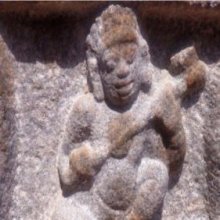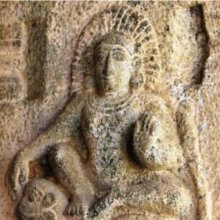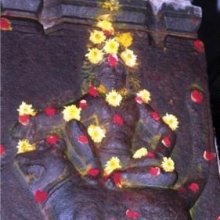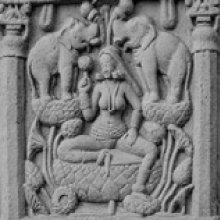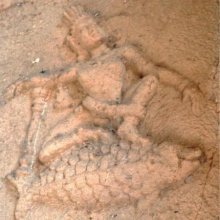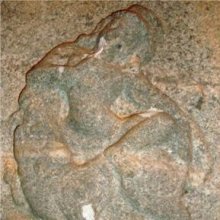Rajalilasana, Rajalila-asana, Rājalīlāsana: 2 definitions
Introduction:
Rajalilasana means something in Hinduism, Sanskrit. If you want to know the exact meaning, history, etymology or English translation of this term then check out the descriptions on this page. Add your comment or reference to a book if you want to contribute to this summary article.
Images (photo gallery)
(+7 more images available)
In Hinduism
Shilpashastra (iconography)
Source: Google Books: The Book of Hindu Imagery: Gods, Manifestations and Their MeaningRājalīlāsana (राजलीलासन)—The “royal”, playful position. This is a relaxed position which is often seen in gods who are represented seated next ot their wife. One leg is drawn up, the other hangs down quite relaxed and the weight of the body is often supported by the arm (slightly stretched back). If both legs are drawn up, this is no longer a “royal” position but is known as “lilasana”.
Source: Shodhganga: The significance of the mūla-beras (śilpa)Rājalīlāsana (राजलीलासन) or Mahārājalīlāsana refers to a type of Āsana (sitting poses), according to Ganapati Sthapati in his text Ciṟpa Cennūl, as defined according to texts dealing with śilpa (arts and crafs), known as śilpaśāstras.—In the [Mahārājalīlāsana / Rājalīlāsana] posture, with the right leg held vertically and the left folded flat, if the right elbow is placed on the right knee with the hand gracefully bent down or held close to the chest, and the left hand supported on the ground, with the body arched in a relaxed manner, it is called mahārājalīlā-āsana. Buddha and Siṃhanātha images are usually fashioned in this posture.
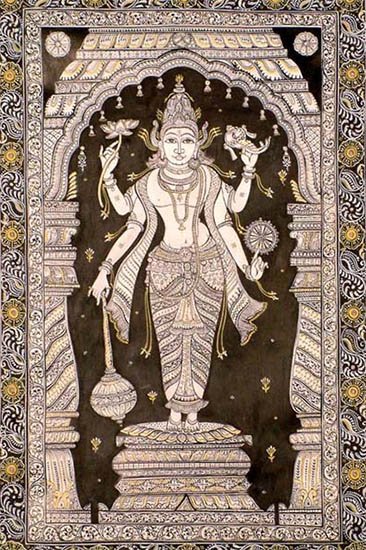
Shilpashastra (शिल्पशास्त्र, śilpaśāstra) represents the ancient Indian science (shastra) of creative arts (shilpa) such as sculpture, iconography and painting. Closely related to Vastushastra (architecture), they often share the same literature.
See also (Relevant definitions)
Ends with: Maharajalilasana.
Full-text: Maharajalilasana, Sukhasana, Mahasri.
Relevant text
Search found 3 books and stories containing Rajalilasana, Rajalila-asana, Rājalīlā-āsana, Rājalīlāsana, Rāja-līlāsana, Raja-lilasana; (plurals include: Rajalilasanas, asanas, āsanas, Rājalīlāsanas, līlāsanas, lilasanas). You can also click to the full overview containing English textual excerpts. Below are direct links for the most relevant articles:
The Indian Buddhist Iconography (by Benoytosh Bhattachacharyya)
Jainism in Odisha (Orissa) (by Ashis Ranjan Sahoo)
Adinatha Temple, main temple (Khordha) < [Chapter 3: Survey of Jaina Antiquities in Odisha]
Kaunri Devi Temple, Gobindpur < [Chapter 3: Survey of Jaina Antiquities in Odisha]
Jaina Antiquities at Basulei Thakurani, Sitalesvara < [Chapter 3: Survey of Jaina Antiquities in Odisha]
Jain Remains of Ancient Bengal (by Shubha Majumder)
Ṛṣabhanātha sculptures with miniature Tīrthaṅkaras and Dikpālas < [Chapter 6 - Iconographic Study of Jaina Sculptural Remains]
Miniature Tīrthaṅkara and Planatary Deities type of Candraprabha < [Chapter 6 - Iconographic Study of Jaina Sculptural Remains]
